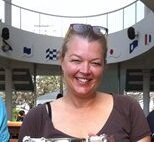The old FCC building. Courtesy Avani.
You don’t have to be a writer to visit Cambodia, but it’s OK to pretend you are a newly-reborn Hemingway if you do. Just make sure visit one of the newest refurbishments in Cambodia’s Angkor Wat region – the Avani FCC Angkor. By James Teo.
Cambodia. October 2019. Just across from the Royal Independence Gardens and Royal Residence in Siem Reap, the Foreign Correspondent’s Club (FCC) Angkor was originally built in 1917 as a fittingly elegant house for the French colonial governor. After the French left, it saw a variety of roles – including being used as the local FCC for overseas reporters – but fell into a state of relative neglect until it was recognised in 2003 for its architectural delights by Bali-based architect Gary Fell, and turned into a cool club.
“It’s not a hotel, it’s a home” - Malee Whitcraft
When FCC Angkor was selected for a new refurbishment last year, the managers – Avani Hotels – said it “was imperative that the cultural foundations of the property and its surrounding community were carefully maintained.” A big call, and to make sure this was the case, Dutch-born, Bangkok-based designer Malee Whitcraft was brought in to help maintain an authentic atmosphere.
“We wanted it to be relaxed, a place where anyone is welcome. It’s about being happy and enjoying life, and … sharing the liveliness and spirit which FCC was built for,” said Whitcraft. Her approach has worked. “It’s not a hotel, it’s (more like) a home,” she smiles.
The new managers say they wanted a place where visitors could “embrace the FCC tradition of passing travellers trading stories, a heritage as a base of explorations for travellers, journalists, movie stars and tomb raiders.” And although the only area that still echoes the art deco-style 1960s FCC villa is the restaurant, the whole place still feels slightly ‘golden age’ with a calm and open feel, and some nice period touches in addition to the cool open areas in the new additions..
Tropic cool is the watchword at the new FCC extension area. Courtesy Avani.
Today, the villa remains the focal point, but has been extended and added-to with 80 new rooms and suites filled with Khmer art and locally woven furnishings – as well as old typewriters, framed newspaper pages and rotary dial phones that all offer historical connections to the art of news.
In the main area, the slightly optimistically-named Scribe Bar also plays on the foreign correspondent concept, with plenty of cocktails to lubricate potential essayists who can pull up a stool and spin some tall stories, or just collapse in a lounger by the saltwater pools, and, Somerset Maugham style, “take off their trousers far more frequently than most of us.” Or not, depending on the company.
If you want to sample some even less genteel nightlife, the hotel runs its own fleet of tuk-tuks, which means you don’t have to run the gauntlet of the spruikers to get into town. Sure, it might cost you a bit more to get there; but like the journalists of old, the accent is as always on convenience.
Surrounded by huge, centuries-old trees and lush tropical flora, the resort claims it is inspired by nature in its riverside situation, wedged between the Siem Reap River and the famous Pokambor Avenue.
The Scribe bar should tempt all putative writers - to drink. Courtesy Avani.
“When I came to Siem Reap in 1992, Angkor Wat was virtually empty,” said Whitcraft in a recent interview. “I saw and loved the design of the FCC then, and the whole feel of it.”
As part of FCC Angkor’s sustainable community outreach and commitment to empowering women, local weaving villages have been engaged to produce bed runners and chair cushions for the update.
These showcase the kind of exquisite craftsmanship that makes the region more than just a place to stop and look at temples. Also, the hotel prides itself on helping to immerse guests in local culture. As part of its put-back into the community, the FCC is one of the key players in organising the Angkor Marathon, and the Angkor Photo Festival too.
Whitcraft sums up the feel of the place by saying she wanted to embrace a colonial, inclusive feel with the update of the site, and says she feels fortunate that all involved were so “tremendously passionate and proud of the project.”
“Everybody, including the staff, have all been an integral part of the process. That’s made it a fun place to stop by, whenever, at any time,” she added.



